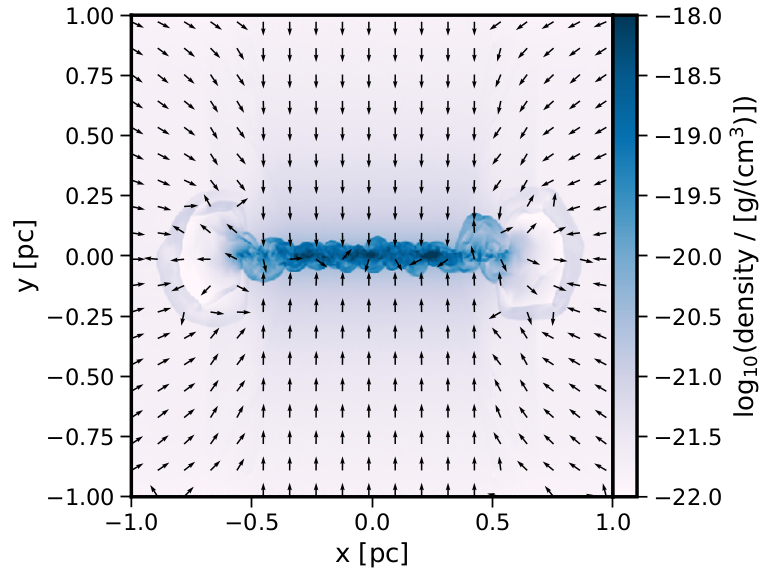| EPoS Contribution |
|
Beating the "Edge Effect" by gas accretion onto filaments
Stefan Heigl USM/LMU, Munich, DE | |
| The gravitational collapse of finite structures typically results in a concentration of material at the edges due to graviational focusing, a process also known as the "Edge Effect". In the case of a star-forming, parsec sized filament, the global collapse along its axis leads to two dominating cores at both ends of the filament. While this result is often reproduced in numerical simulations, this archetypical structure is rarely seen in observations. Therefore, we present a possible mechanism of how this effect and the overall collapse of a filament can not only be slowed down but even prevented. We use numerical simulations with the RAMSES code to study the effect of radial accretion of ambient material onto finite filaments. We show that if the mass accretion rate is large enough, the accretion leads to a flow inside the filament which directs material towards its ends. This results in a low-density outflow at both ends which prevents its collapse and the formation of end dominating cores over the lifetime of a filament. | |
 | |
| Caption: Density cut through a simulation of a filament with radial accretion. The arrows represent the flow of material. The accretion leads to a low-density outflow at both ends of the filament which prevents its collapse and the formation of end dominating cores. | |
| Collaborators: A. Burkert, USM/LMU, DE M. Gritschneder, USM/LMU, DE E. Hoemann, USM/LMU, DE |
Suggested Session:
Cores |

